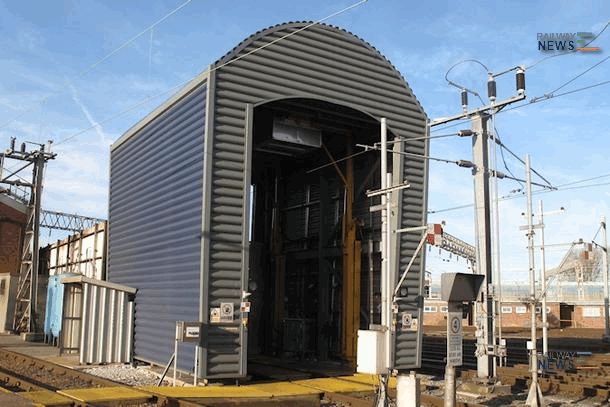Alstom Introduces 2nd TrainScanner at Oxley
Alstom has launched a second TrainScanner at Oxley depot, near Wolverhampton in the West Midlands, UK.

The move follows the successful testing of a TrainScanner predictive maintenance prototype on Virgin’s fleet of Pendolino trains in Manchester. TrainScanner is part of HealthHub solution, which is Alstom’s predictive maintenance solution. The device makes it possible to automatically determine the status of rolling stock, infrastructure and signalling.
The solution also helps to identify components that need to be repaired or changed, with stored information about replacement dates. This allows the right quantities of materials to be delivered at the right time, so maintenance staff can operate quickly, increasing fleet availability.
TrainScanner automatically analyses gathered data by laser or 3D camera measurement systems, using a diagnostics portal. It then uses the data to predict the remaining service-life of the rolling stock.
Installation of a second TrainScanner will represent a significant upgrade in the company’s high-tech maintenance capability, and shows that the predictive maintenance tool is ready for mainstream deployment across train fleets worldwide.
Alstom UK&I Regional and Intercity managing director Rob Whyte said: “[quote font_size=”20”]
Now we have proven Alstom’s new technology works well, we want to bring a second machine to the UK at Oxley. This will massively increase Alstom’s maintenance capability here in Britain.
“The investment will also allow Alstom to take its prototype here in Manchester and turn it into a fully industrially designed solution. This will drive down the cost and allow easy deployment of TrainScanner to our customers worldwide.”
[/quote]
With the two machines being located at two depots out of five on the West Coast Main Line (WCML), the device will ensure that Pendolino trains get a maintenance scan every five days on average.
The company noted that the second TrainScanner has a new and more modular design, which will used for customers across the world. The system has been upgraded to be much easier to repair, allow the laser and camera units to be calibrated at the factory before delivery and reducing install time. This also creates lighter and simpler ground-level boxes.
It also helps in improving reliability and has a rail mounted system reducing the civil work required to build the TrainScanner at the depot by 50%.



